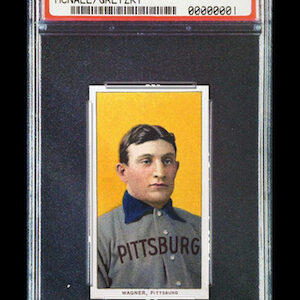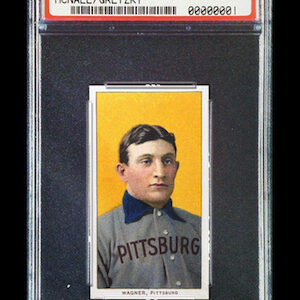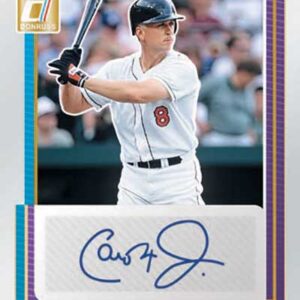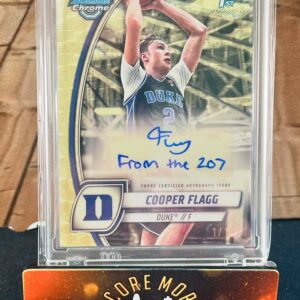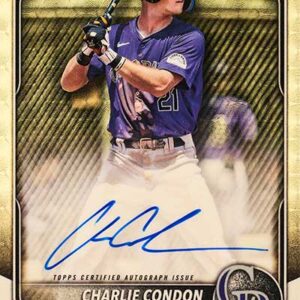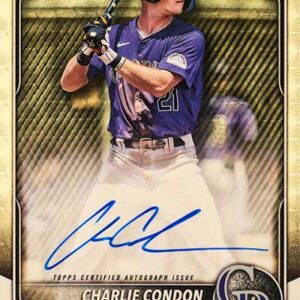In the world of sports memorabilia collecting, it is not unusual to stumble upon unexpected treasures. However, the recent discovery of a cache of 39 cards from the rare 1921 Herpolsheimer set has ignited excitement among enthusiasts and collectors. The cards, including nine that had previously been unknown to the hobby, were found tucked away in a Band-Aid box of all places. This extraordinary find, hidden for nearly a century, has now been unveiled in Love of the Game Auctions’ ongoing event.
The 1921 Herpolsheimer cards have long been regarded as some of the rarest in the world of baseball card collecting. Only 105 cards from this set had been authenticated and graded across both the PSA and SGC population reports. This recent discovery not only expands the known universe of these cards but also introduces new faces to the mix.
Al Crisafulli, the auction director at Love of the Game, couldn’t contain his excitement. “I’ve been captivated by these for years,” he shared. Crisafulli’s sentiment is shared among serious collectors who are aware of the rarity and historical value of the Herpolsheimer issue.
The story of this find is as intriguing as the cards themselves. In 2019, at an estate sale near Grand Rapids, Michigan, the cards were found nestled inside a Band-Aid box—a simple container hiding a small fortune in paper treasures. Crisafulli had been in contact with the owner of the cards for four years before finally securing them for auction. The cards have since been graded by PSA, and each will be auctioned off individually.
Among the collection is a card of Babe Ruth, only the second of its kind known to exist. Given the scarcity and legendary status of the Great Bambino, this card alone is expected to garner a high price at auction. The newfound collection also features other Hall of Famers such as Tris Speaker, Grover Cleveland Alexander, Rabbit Maranville, John McGraw, Red Faber, and Sam Rice, further enhancing its significance.
The backs of these cards are just as interesting as their fronts, as they advertise the Grand Rapids retail store’s Boy’s Fashion Shop. The discovery of additional cards not listed in the original checklist, including names like Dave Bancroft, Johnny Evers, Harry Hooper, Stuffy McInnis, Art Nehf, Wally Schang, George Sisler, Casey Stengel, and Fred Toney, suggests that the set may be larger than previously thought. It is now believed to comprise 78 or 79 cards instead of the previously assumed 69 or 70.
Crisafulli first learned about these cards in 2019 when the owner discreetly inquired about them on the Net54 sports card forum. Both the post and the cards piqued the curiosity of forum members and Crisafulli, who reached out and stayed in touch until the auction consignment was secured.
The backstory of the Herpolsheimer Company is as rich and diverse as the cards themselves. Founded in 1870 as a dry goods store by William Godlove Herpolsheimer and Charles G.A. Voigt, it quickly became a prominent presence in Grand Rapids and beyond. Henry Herpolsheimer and his son Arthur later took over the company, eventually expanding into furniture sales through a merger. Unfortunately, Arthur’s life came to a premature end, adding a somber note to the family’s history.
The store’s legacy also intersects with national history when Betty Bloomer, who would later become First Lady as the wife of President Gerald R. Ford, worked there as a fashion coordinator in 1942.
The discovery of this second batch of Herpolsheimer cards reshapes the narrative of their distribution and significance. It suggests a more widespread release than previously believed, painting a picture of a department store that cleverly used the allure of baseball’s most celebrated figures to appeal to its clientele.
The Band-Aid box in which these cards were found—a metal relic from the 1930s—is a poignant reminder of the journey these cards have taken. From being mere promotional tools in a local store to becoming coveted historical artifacts in the world of collectibles.
As the auction date draws near, these cards are poised to captivate the collecting community, offering a rare glimpse into the early days of baseball card collecting. Each card, with its faint pencil markings and signs of wear from handling, tells a unique story—a story that collectors will soon have the chance to continue as they become the new guardians of these valuable pieces of baseball history.
